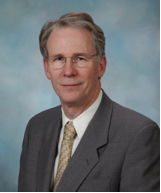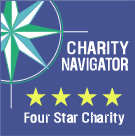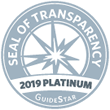 Presented by Robert Smallridge, MD
Presented by Robert Smallridge, MD
American Thyroid Association Annual Business Meeting
Walt Disney World Swan and Dolphin
Lake Buena Vista, Florida
Monday, October 19, 2015
Looking back over the past year, I recognize how fortunate I am to have the American Thyroid Association as my professional home, and I am extremely grateful for the opportunity to have served you, the members, as President. It has been an eventful year, with multiple guidelines published, with a successful Strategic Planning Retreat to refresh and update our vision for the future, and with the International Thyroid Congress this week. We serve as the host organization but once every 20 years, and so I was very pleased that the Congress is in North America this year.
My term nearing its completion has given me pause to reflect on the evolution of our organization. Bobbi Smith was kind enough to send me some records from the archives, and I would like to share with you a few observations about our history—THEN vs. NOW. In December, 1923, the Illinois Clinic Club, led by Dr. E. P. Sloan, created the American Association for the Study of Goiter with 30 charter members. Dr. Sloan was our first President, and there were more than 200 attendees at the first program meeting held in Bloomington, Illinois, the following month.
The program was interactive. Today we have thyroid ultrasound workshops. At the early meetings, attendees went to operating theaters to observe thyroidectomies performed comparing various anesthetics including local anesthesia, nitrous oxide, ethylene oxide, and ether.
Today we have Guidelines Task Forces. Back then, the organization established a Committee on Goiter Classification and Nomenclature (Chair: Dr. Seymour D. Van Meter), and the results were “accepted by most insurance companies, covering life, sickness, and hospitalization benefits.”
Today we have expanded our membership to become inclusive of many specialties. Of note, though, the meetings were multidisciplinary from the beginning, as the 1925 program had a symposium which included viewpoints of the internist, surgeon, ophthalmologist, laryngologist, and pathologist.
International meetings were also introduced early. Dr. J. R. Yung (whose notes in our Archives provided much of the information I am sharing with you), while visiting Professor de Quervain in Bern, Switzerland, in 1926, learned of a proposed first International Conference on Goiter the next year in Bern. The North Americans then submitted a list of members for invitation, and 26 men from the USA sailed to Europe, visiting European clinics before and after the Conference. There were 188 delegates (researchers, pathologists, internists, surgeons, and public health authorities) from 18 countries, and papers were presented in French, German, Italian, or English.
As a former ATA Treasurer, I was curious about our finances. Expenses for the early meetings would make our current Treasurer envious. In 1933, total registrations were $450 for 90 attendees and the banquet cost $422.35.
In 1935 By-laws stated “members shall not exceed 150,” dues were $10.00, banquet tickets $2.00, and total organization assets were $5,040.92. Records also indicate that “there should be more papers by internists and that surgical papers have been too prominent in the program.”
By 1949, membership dues had increased to $15 and banquet tickets to $5. Our organization was also becoming political. The Resolutions Committee recommended that “a resolution opposing Socialized Medicine was presented and adopted . . . The secretary was instructed to send a copy of the resolution to every member of the United States Congress.”
In 1974, two years before I attended my first ATA meeting, our By-Laws limited active members to 350, and in 1989 when I began my service as Treasurer, a banquet ticket cost $48 and our total assets were $160,000 (including an endowment of $43,500).
Today, we are a remarkably more diverse, larger, financially secure society with many worthy achievements and an enlightened vision for the future. We have achieved success thanks to the dedication of many members and office staff.
I have great respect for, and would like to extend my deep appreciation to Bobbi Smith, whose dedication to this organization and commitment to excellence are of the highest quality. Bobbi and I initially worked together from 1988-1993, when Len Wartofsky was Secretary and Bobbi was executive administrator. Then it was a one-person office, and now we have exceptional office support from Adonia Coates, Kelly Hoff, Sharleene Cano, Josette Paige, and Meryem Karad, all of whom are largely responsible for efficient functioning of the ATA. My thanks to all of you for your commitment to our organization.
My special thanks to my friend, John Morris, who has led this organization calmly and beautifully through the past 5 years. I have also greatly enjoyed working with our Executive Committee (Bryan Haugen, Hossein Gharib, Greg Randolph, Vic Bernet, and Tony Bianco). I wish Vic Bernet, my close colleague in Jacksonville, best wishes as he takes over as your Secretary. Finally, I wish to acknowledge the dedication of your Board of Directors and the hardworking committee chairs and their committees, and thank all our members and meeting attendees for supporting our society. The future of the ATA is bright, and I urge all of you to remain active within the organization and encourage our younger members and trainees to select the ATA as their professional home, just as I did almost 40 years ago.
In closing, Dr. Smallridge shared that he was “cleaning out his closet and in the spirit of giving back” would like to donate some items he had collected over time to the ATA including, a Graves’ disease t-shirt; neck-tie with an upside-down thyroid design; an ATA watch; a thyroidology thesis; a letter from Lew Braverman acknowledging an abstract written by Smallridge; and some other letters for the ATA archive.





